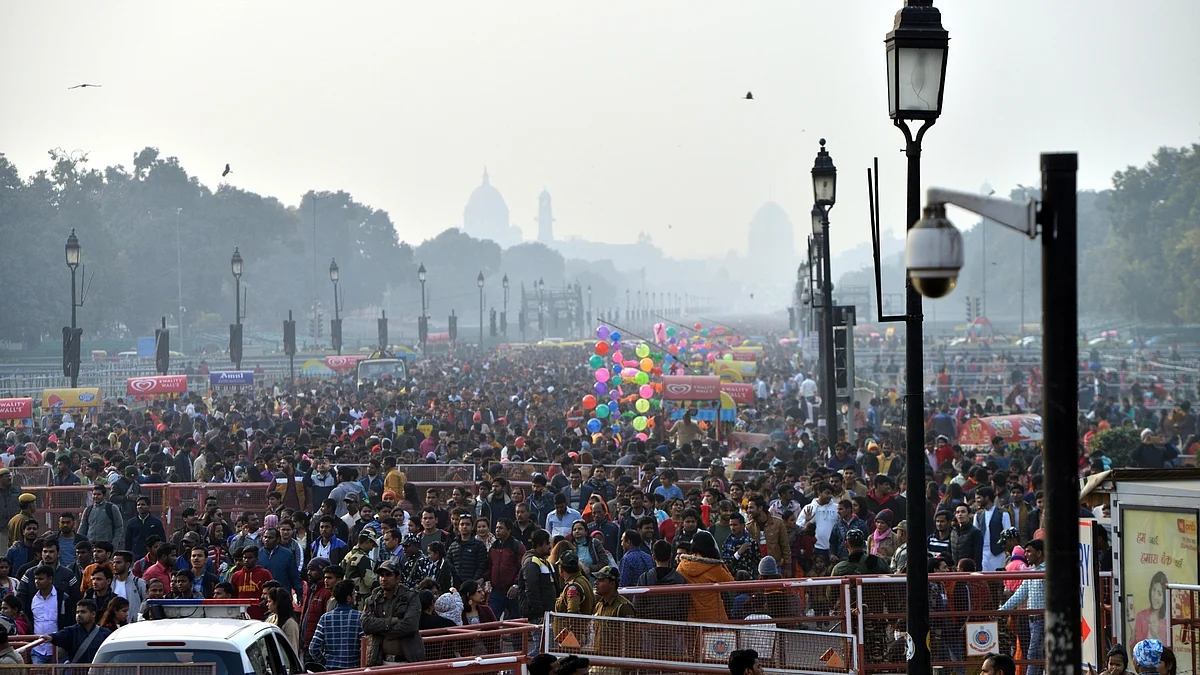India witnessed extreme weather on most days in first 9 months of 2022: CSE
The CSE report comes ahead of the United Nations Framework Convention on Climate Change’s annual summit (COP27) that will be held at Sharm el Sheikh between November 6-18

India experienced extreme weather events on 241 of the 273 days during the first nine months of 2022 -- a little over 88% of the days from January 1 to September 30, says a report by the Centre for Science and Environment (CSE) released on Tuesday. Ahead of the United Nations climate summit, this report highlights the climate vulnerabilities of India.
From heat and cold waves, cyclones, and lightning to heavy rain, floods, and landslides, the disasters in the past nine months have claimed 2,755 lives, affected 1.8 million hectares (ha) of crop area, destroyed over 416,667 houses and killed close to 70,000 livestock.
“This estimation of loss and damage is probably an underestimate as data for each event is not collated, nor are the losses of public property or crop loss calculated,” read the report.
The data in the report has been sourced on extreme events from two key government sources including the Indian Meteorological Department (IMD) and the Disaster Management Division (DMD) of the Union Ministry of Home Affairs while including scanned media reports tracking events, particularly in the pre-monsoon period when official data is inadequate.
The UN Intergovernmental Panel on Climate Change, as per the report, defines extreme weather events as occurrences that are “rare at a particular place and time of year”.
While India does not have an official definition, the India Meteorological Department (IMD), in its annual 'Statement of Climate of India' reports, classifies lightning and thunderstorms, heavy to very, and extremely heavy rainfall, landslides, and floods, cold waves, heatwaves, cyclones, snowfall, dust and sandstorms, squalls, hailstorms and gales as extreme weather events.
The CSE report comes ahead of the United Nations Framework Convention on Climate Change’s annual summit (COP27) that will be held at Sharm el Sheikh between November 6-18. The member nations will take stock of the progress made since the Glasgow summit and what needs to be done to ensure that global warming doesn't breach the guard rail of two degrees Celsius.
East and northeast India recorded extreme events on 171 of 273 days, claimed 783 lives, damaged 256,517 ha crop area, destroyed 318,676 houses, and killed 55,399 animals. The peninsula recorded extreme weather events on 125 of 273 days, which killed 350 persons, damaged 1.06 million ha crop area, destroyed 64,837 houses, and killed 4,382 animals, the report said.
Madhya Pradesh, as per the report recorded the highest number of day with extreme weather conditions while Himachal Pradesh recorded the highest number of deaths due to these events. Karnataka, which experienced an extreme weather event on 82 days since the beginning of the year, accounted for more than 50% of the crop area affected in the country. Moreover, Assam reported the highest number of damaged houses and animal deaths.
The report mentions that the high numbers speak of the increased frequency and intensity of the extreme events that we are witnessing in a rapidly warming world.
“What the country has witnessed so far in 2022 is the new abnormal in a warming world. There is a need to demand reparations for the damage from the countries that have contributed to the emissions in the atmosphere and are responsible for this damage,” the advocacy group said.
CSE said that this is the watermark of climate change while not about a single event but about the increased frequency of the events. “An extreme event we saw once every 100 years has now begun to occur every five years or less. Worse, it is now all coming together—each month is breaking a new record,” it said, adding that this in turn is breaking the backs of the poorest who are worst impacted and are fast losing their capacity to cope with these repeated and frequent events.
In 2022, India recorded its seventh wettest January since 1901, according to weather office data. March was the warmest ever and the third driest in 121 years. Eastern and northeast India saw its warmest and driest July in 121 years. The region also recorded its second-warmest August and 4th warmest September this year.
Every day of the three months of the monsoon – from June to August – indicates heavy to very heavy and extremely heavy rainfall in some parts of the country. This is why the flood devastation has not spared any region. Heat waves claimed 45 lives, but what is not captured in the official data is the impact of the prolonged high temperatures on people’s well-being in north India – from farmers to construction workers -- and how they coped with the intense and searing heat.
“This is the watermark of climate change. It is not about the single event but about the increased frequency of the events—an extreme event we saw once every 100 years has now begun to occur every five years or less,” the report said. “Worse, it is now all coming together—each month is breaking a new record. This in turn is breaking the backs of the poorest who are worst impacted and are fast losing their capacities to cope with these repeated and frequent events.”
Follow us on: Facebook, Twitter, Google News, Instagram
Join our official telegram channel (@nationalherald) and stay updated with the latest headlines
